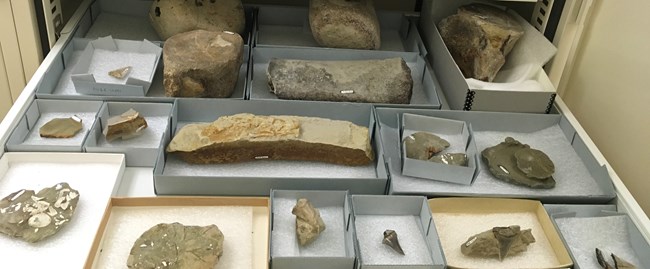
NPS / Point Reyes National Seashore Museum Point Reyes has an interesting geological history due to its location on the Pacific Plate and because the area is transected by the San Andreas Fault Zone. For these reasons, the geology and fossils found within the park's boundaries represent different areas of the California coastline. The numerous paleontological resources at Point Reyes National Seashore hold many opportunities for research. The 2007 Natural Resource Technical Report, Paleontological Resource Inventory and Monitoring - San Francisco Bay Area Network, lists the known paleontological resources in the various geologic conglomerates and formations throughout the park and recommends a field-based paleontological inventory. Visitors to the park may view a limited selection of fossils inside the Kenneth C. Patrick Visitor Center at Drakes Beach. Uncontrolled surface collecting by visitors and park staff is prohibited by law. Fossils found on the surface by visitors should not be removed from their original location by the finder. They should be reported to park staff (415-464-5100 x2 x5). All researchers wishing to collect, document collections and conduct other associated collecting activities must possess an approved collecting permit. If you would like to apply for a scientific collecting permit at Point Reyes National Seashore, please visit the Integrated Resources Management Applications (IRMA) Portal website to start the process. For more information about the museum's paleontology collections, please email the Museum Curator. Want to know more?
|
Last updated: August 22, 2024
